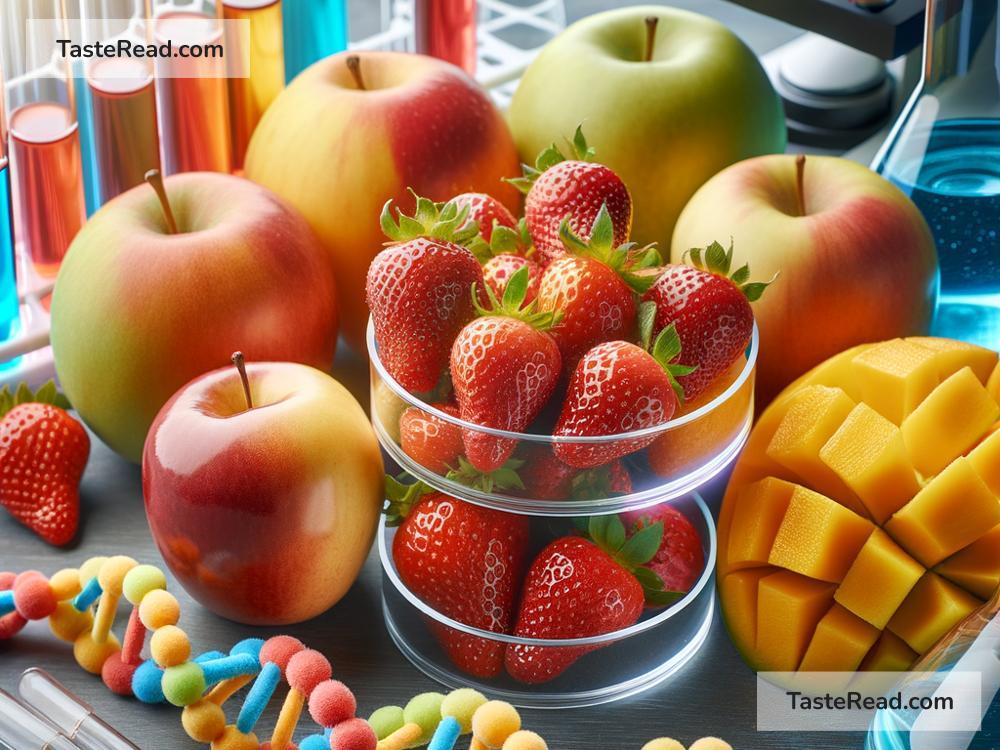The Genetic Factors Influencing Fruit Flavor Profiles
Fruit isn’t just a sweet treat; it’s a delicious puzzle shaped by nature and science. Every time you bite into a juicy strawberry or a crisp apple, you’re tasting a unique mix of flavors created by the fruit’s genes. But how do these genetic factors work? Why do some fruits taste sweeter or tangier than others? Let’s dive into the fascinating world of genetics to explore how they influence the flavor profiles of fruits.
What Makes Fruit Flavorful?
The flavor of fruit comes from a blend of sweetness, sourness, bitterness, and aroma. Sweetness often comes from sugars like glucose and fructose, sourness typically comes from acids like citric or malic acid, and aromas are produced by volatile organic compounds (VOC) – molecules that float into your nose and give fruit their scents.
For example, the sugary sweetness of a ripe mango is different from the tangy zing of a lemon. But the combination of tastes and smells isn’t random. Genes inside the fruit determine how much sugar it produces, how acidic it is, and what type of aroma molecules it makes.
How Do Genes Control Flavor?
A fruit’s genes are like instructions that tell its cells how to grow and what substances to produce. These instructions guide the production of molecules that make fruits flavorful. Let’s look at the different aspects of flavor and how genes play a role:
1. Sugars (Sweetness)
The sweetness of fruit comes mainly from sugars, and genes play a big role in how much sugar a fruit makes or stores. For example, watermelon has genes that regulate the production of glucose and fructose during ripening. When these genes are highly active, the fruit becomes sweeter. On the other hand, a less sugary fruit, like cranberries, has genes that produce fewer sugars.
Scientists have also discovered that the timing of sugar production depends on specific genes. This explains why ripe fruits are sweeter than unripe ones; certain genes “turn on” during ripening, increasing sugar levels.
2. Acidity (Sourness)
Genetic factors also control the levels of acids in fruits. Acids give fruits their tangy taste – think of lemons, limes, or pineapples. Malic acid (found in apples) and citric acid (found in citrus fruits) are the two main acids linked to fruit sourness. If a fruit has genes that produce a lot of acid, it will taste tangier. When acid-related genes are less active, the fruit tastes milder.
One interesting example is strawberries. Different varieties of strawberries have unique acid levels because of genetic differences. The genes influence whether a strawberry leans toward sweet or sour depending on the balance of cells producing acids versus sugars.
3. Aromas (Smell and Taste)
A flavor isn’t just about taste; it’s also about smell. The molecules responsible for a fruit’s aroma are called volatile organic compounds (VOCs). These small molecules evaporate into the air, activating smell receptors in your nose when you eat the fruit.
Fruits have hundreds of VOCs, each contributing a distinct scent. For instance, bananas smell sweet because they produce esters – a type of VOC. Similarly, peaches are known for their floral aroma because of their production of lactones, another VOC group.
The genes behind VOC production determine the type and quantity of these aroma molecules. Interestingly, small changes in a fruit’s DNA can significantly alter its scent. For example, some varieties of tomatoes smell fresher and sweeter because their genes boost the production of VOC molecules like hexenal, which gives off a grassy scent.
4. Texture and Ripeness
The texture of a fruit also influences how its flavor is perceived, and this too is controlled by genes. Genes determine how soft, juicy, or crunchy a fruit becomes as it ripens. For example, apples have genes that regulate water content and firmness, while mangoes have genes that control how juicy their flesh gets.
Ripeness matters because it changes how sugars, acids, and VOCs are balanced. Genes involved in ripening “activate” chemical changes, creating the perfect flavor at just the right time.
Breeding Fruits with Specific Flavor Profiles
Farmers and scientists have long worked to improve fruit flavor by selecting varieties with specific genetic traits. For example, breeding sweeter strawberries or less acidic apples involves identifying and amplifying the desirable genes. Modern technology, like gene mapping and genetic editing, has made it much easier to focus on these traits.
Researchers are experimenting with CRISPR, a cutting-edge gene-editing tool, to tweak genes in fruits and create better flavor profiles. For instance, scientists are working to enhance vanilla notes in tomatoes or reduce bitterness in cucumbers.
Conclusion
Fruit flavor is a complex dance between sweetness, sourness, aroma, and texture – all guided by the genetic instructions inside the fruit. Genes control everything from sugar production to acid levels and the fruity scents we love. By understanding these genetic factors, scientists can breed tastier fruits, giving us better choices at the grocery store.
Next time you enjoy a piece of fruit, remember that its delightful flavor isn’t just a random miracle of nature. It’s the result of a finely-tuned genetic recipe, perfected over years of evolution and human cultivation. So, the next strawberry you eat might taste even sweeter thanks to advancements in genetics – and that’s pretty amazing!


